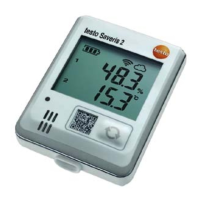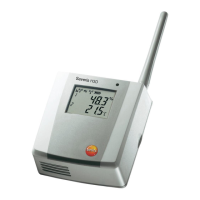3 Specifications
10
the event of difficult structural conditions. The data is then called up
from a computer by the Saveris base and saved to a database.
Very long distances can be bridged using a converter , which
converts the radio signals of the probe or router and then transmits
this measurement data to the base via an Ethernet cable. The so-
called Ethernet probes can also be connected to the base using
an Ethernet cable.
The temperature and/or air humidity during the transportation of
sensitive goods are also monitored by radio probes . If the
transportation container (e.g. HGV) returns to the base, the
measured values are transferred to the extender or the Saveris
base as soon as there is an adequate radio link. The extender
converts the radio signals of the probes and then forwards the
measured values via Ethernet cable to the Saveris base . For
direct monitoring of measured values, a Saveris cockpit unit can be
used in the HGV .
If radio probes are registered in mobile zones, all these probes are
in one radio cell on the same channel. The Saveris extenders work
as external distributed antennas of the Saveris base. All of these
radio probes are registered on the Saveris base.
In contrast, Saveris converters each span separate radio cells with
different radio channels (among one another but also to the Saveris
base). The probes are directly and uniquely assigned to the
converter.
With the testo Saveris software, you always have an overview of
the development of the measured values in the individual areas.
The specific advantages of Saveris with regard to data security and
availability come about through the saving of configuration data to
distributed locations in the system (e.g. in the probe, in the base, in
the PC database). Synchronisation is carried out at regular
intervals, during radio transmission every 15 min. Depending on the
system architecture (cascaded routers) and a running process (e.g.
firmware update, radio probe over air), the transfer cycle is also the
